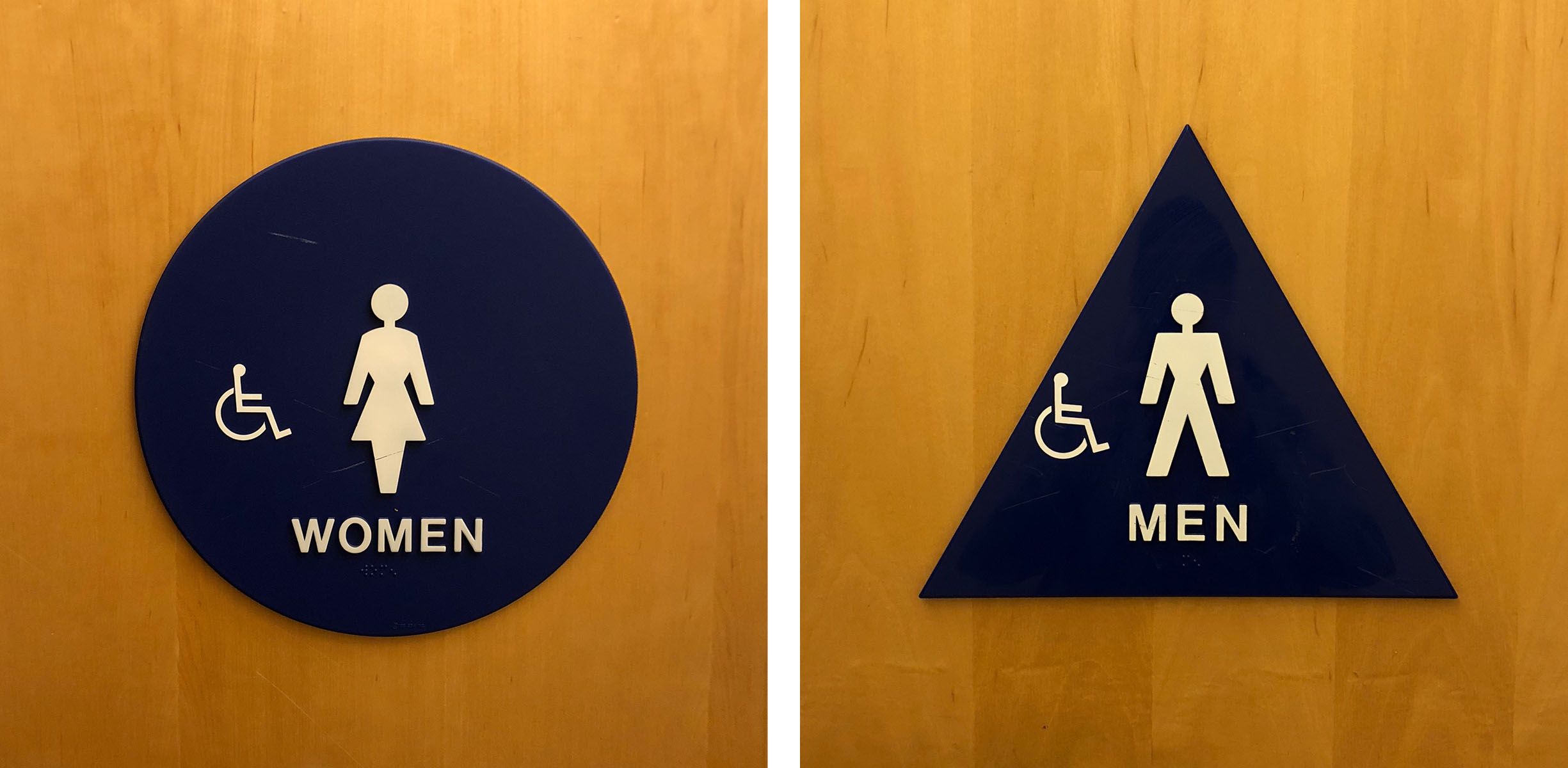Like many office buildings, the one where I work has a pair of similar — yet different — rooms on every floor. The doors to each room have signs on them:

These labels should look familiar; they’re common nomenclature in many cultures. They indicate that these two rooms serve similar functions, but are meant to be used differently.
We’ve internalized the “men” and “women” labels in this context to mean there are toilet facilities in these rooms. That’s their functional role, which both have in common. The difference dictated by this labeling system is in who should be using each room for this function: one room is set aside for women and another for men. In other words, these are prescriptive labels; they’re nudging us towards a particular behavior in the environment.
On the ground floor of this same building, there is a coffee shop. It too has a pair of restrooms. The labeling system used to describe these restrooms is very different from the one used on the upper floors:

These labels are not attempting to prescribe who should be using the rooms; they merely describe their contents. Not all of their contents, of course; the labels’ designer has chosen to highlight one particular feature of one of the toilets. One of these rooms has a urinal, which is impractical for women. Still, men or women can use either room; one of the rooms just has an additional feature that probably won’t be used by one set of users. Because they’re merely describing the contents of the room, I think of these as descriptive labels.
The traditional way of labeling restrooms has been to divide them using the men/women dichotomy. But culture is evolving, and in some places gender distinctions are becoming less rigid. This raises issues with this prescriptive labeling scheme; some people may be uncomfortable using one or the other room based on expectations of traditional gender roles. The descriptive labeling scheme overcomes the issue by giving agency to the user: the individual gets to decide which room to enter not based on roles suggested by the environment, but by the functional features of each room.
Sounds ideal, right? However, I must note there’s a crucial difference between these restrooms that is important to our discussion: The rooms in the upper floors are communal (meant to be used by more than one person at a time) while the ones in the coffee shop are individual (meant to be used by only one person at a time.) This complicates matters significantly since the issue is then not just about personal choice. Many people in our culture would feel uncomfortable sharing a small restroom with members of other genders, making the descriptive labeling scheme challenging to implement in that case.
When we define a taxonomy, we’re creating distinctions. It’s been said that all taxonomies are political, and few are more so than those that suggest identities to people. With complex issues such a gender, all approaches come with trade-offs. Conscientious design requires we consider whether we’re being descriptive or prescriptive, and the implications of either approach.